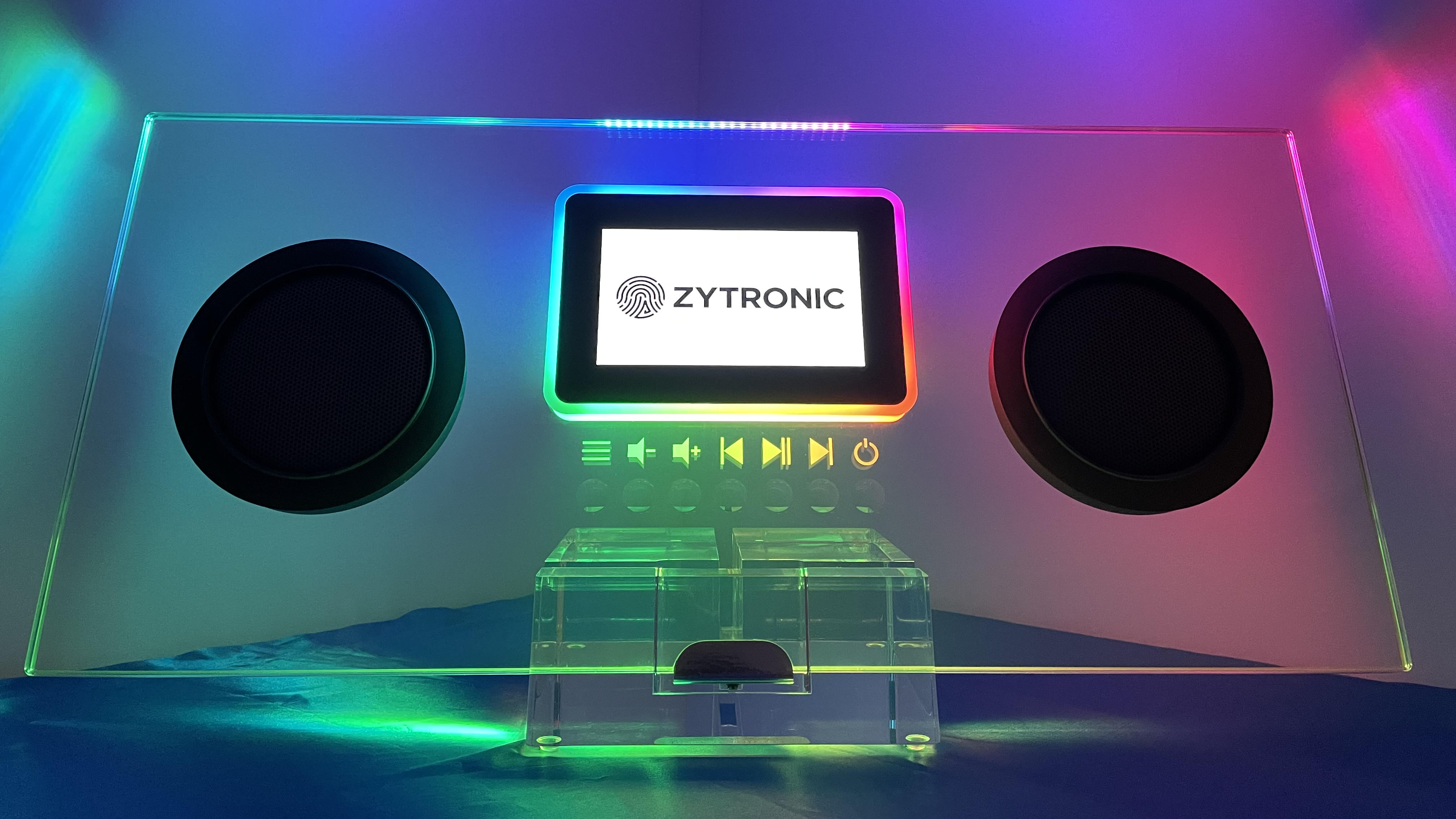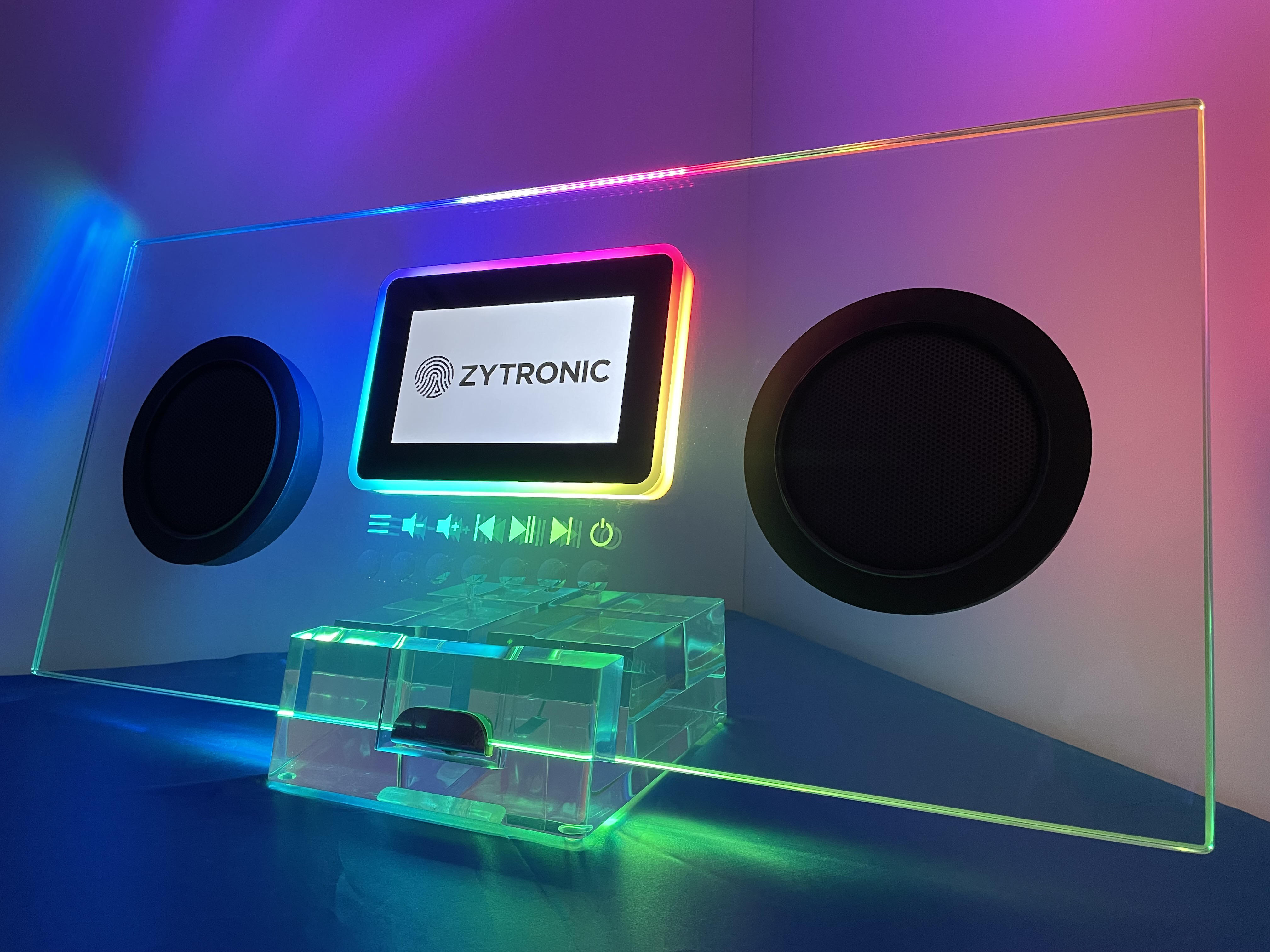This amazing speaker design uses glass instead of wires
A prototype wire-free hi-fi system features a speaker and screen 'floating' in electrically conductive glass

We’re now well used to the idea of cable-free audio thanks to tech like Bluetooth, but a new concept hi-fi system is aiming to take the idea of a wireless speaker to a whole whole new level.
The ElectroglaZ is a speaker unit centered around a pane of glass. While see-through hi-fi is nothing new – check out Sony’s LSPX-S3 – this transparent unit has a further trick up its sleeve.
It utilizes a unique new electrically conductive glass which acts as the wires to the different parts, effectively. Power is passed through the pane, allowing the components to look like they’re ‘floating’ within the see-through panel, with no other cables between them.
Electricity passes through the ElectroglaZ via a hidden connection around its perimeter and conductive glass’ lamination, eventually reaching the speakers and the system’s touchscreen LCD display.
A further layer of glass is laminated to the front to create a touch interface with playback buttons using a proprietary Project Capacitive (PCap) Technology.
The transparent sound system is a collaboration between touch screen specialists Zytronic and UK-based glass manufacturers Pilkington and is set to be shown off to the public at next month’s ISE 2023 AV expo in Barcelona.
According to Zytronic, only low voltages can be transmitted through the glass, but that still appears to be enough to power the system’s screen, Bluetooth speakers and playback control interface.
Sign up for breaking news, reviews, opinion, top tech deals, and more.

Analysis: Concept sound system has us peering through the looking glass of what may be possible
While the ElectroglaZ may not look like the prettiest of hi-fi systems that we’ve seen, its ground-breaking tech and the future it points to definitely has us excited.
Zytronic says it's already incorporated the transparent power conduction system into a series of other concept devices including a glass coffee table capable of juicing up mobile phones and tablets via inbuilt induction charging, and a transparent ‘huddle’ meeting room panel with video camera and LCD display powered through the glass.
There’s clearly plenty of aesthetic benefits to be had from the tech that were previously unachievable – we’re throwing out the idea of an all-glass soundbar as a living room centerpiece – but there’s also important practical benefits that could stem from this breakthrough.
With the system seemingly able to work through very thin glass, Zytronic and Pilkington’s tech could make a world of difference to smart eyewear and VR glasses, potentially allowing for HUD-style displays to be powered more easily and discreetly.

Kevin Lynch is a London-born, Dublin-based writer and journalist. The author of Steve Jobs: A Biographic Portrait, Kevin is a regular feature writer for a number of tech sites and the former Technology Editor for the Daily Mirror. He has also served as editor of GuinnessWorldRecords.com and has been a member of the judging panel for the BAFTA British Academy Video Game Awards. Alongside reviewing the latest AV gear, smartphones and computers, Kevin also specialises in music tech and can often be found putting the latest DAWs, MIDI controllers and guitar modellers through their paces. Born within the sound of Bow Bells, Kevin is also a lifelong West Ham fan for his troubles.